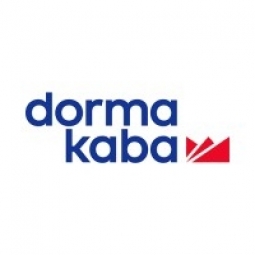公司规模
Mid-size Company
地区
- America
国家
- United States
产品
- DORMA 8900 Series Closers
- DORMA 9000 Series Exit Devices
- DORMA BTS80 Closers
- DORMA LM Series Pivots
- DORMA CL700 Locksets
技术栈
- Hydraulic control system
实施规模
- Enterprise-wide Deployment
影响指标
- Brand Awareness
- Customer Satisfaction
技术
- 应用基础设施与中间件 - API 集成与管理
适用行业
- 建筑物
- 建筑与基础设施
适用功能
- 设施管理
用例
- 楼宇自动化与控制
服务
- 系统集成
关于客户
铁马酒店是一家位于密尔沃基市中心的豪华酒店。酒店由 Dixon Development LLC 的 Tim Dixon 创建,他设想酒店既能满足商务人士的需求,也能满足骑车者的需要。酒店坐落在一座经过翻修的百年老砖仓库内,可近距离欣赏哈雷戴维森博物馆的景色。铁马酒店在豪华的环境中提供最先进的商务服务,同时还提供骑车者专用设施,例如现场自行车清洗和每个房间内用于悬挂厚重皮革的挂钩。酒店的内部装饰保留了美国工业时代的风格,梁结构、裸露的砖块和原始结构的铁质细节均得以保留。
挑战
Dixon Development LLC 的 Tim Dixon 有个愿景,要在密尔沃基市中心建造一家高档酒店,同时满足商务人士和骑行者的需求。他购买了哈雷戴维森博物馆附近一座被忽视的百年老砖仓库,并着手将其改造成豪华的铁马酒店。这项挑战在于将这座 90,000 平方英尺的仓库改造成一家拥有 100 间客房的酒店,同时保留建筑原有的建筑风格和工业时代的魅力。酒店需要在奢华的环境中提供最先进的商务服务,同时还要为骑行者提供便利设施,例如现场自行车清洗和每个房间内用于悬挂厚皮衣的挂钩。所有现代化的附加设施,包括门五金件,都必须与翻新的空间相得益彰。
解决方案
为了确保翻新空间内新门道的高效运行,我们选择了安全耐用的多玛建筑五金件。多玛 8900 系列闭门器采用现代建筑风格的液压控制系统,因其窄投影全覆盖和平整臂型而备受青睐。多玛 9000 系列出口设备采用重型铸造底盘和光滑的减投影触摸杆组件,为高冲击应用提供卓越的耐用性。几乎看不见的隐藏式多玛 BTS80 闭门器和 LM 系列枢轴支撑着酒店新玻璃封闭楼梯间的门。高级多玛 CL700 锁具采用高性能圆柱形底盘,提供安全性和多功能性,并提供多种杠杆和旋钮装饰设计。
运营影响

Case Study missing?
Start adding your own!
Register with your work email and create a new case study profile for your business.
相关案例.

Case Study
Energy Saving & Power Monitoring System
Recently a university in Taiwan was experiencing dramatic power usage increases due to its growing number of campus buildings and students. Aiming to analyze their power consumption and increase their power efficiency across 52 buildings, the university wanted to build a power management system utilizing web-based hardware and software. With these goals in mind, they contacted Advantech to help them develop their system and provide them with the means to save energy in the years to come.

Case Study
IoT System for Tunnel Construction
The Zenitaka Corporation ('Zenitaka') has two major business areas: its architectural business focuses on structures such as government buildings, office buildings, and commercial facilities, while its civil engineering business is targeted at structures such as tunnels, bridges and dams. Within these areas, there presented two issues that have always persisted in regard to the construction of mountain tunnels. These issues are 'improving safety" and "reducing energy consumption". Mountain tunnels construction requires a massive amount of electricity. This is because there are many kinds of electrical equipment being used day and night, including construction machinery, construction lighting, and ventilating fan. Despite this, the amount of power consumption is generally not tightly managed. In many cases, the exact amount of power consumption is only ascertained when the bill from the power company becomes available. Sometimes, corporations install demand-monitoring equipment to help curb the maximum power demanded. However, even in these cases, the devices only allow the total volume of power consumption to be ascertained, or they may issue warnings to prevent the contracted volume of power from being exceeded. In order to tackle the issue of reducing power consumption, it was first necessary to obtain an accurate breakdown of how much power was being used in each particular area. In other words, we needed to be able to visualize the amount of power being consumed. Safety, was also not being managed very rigorously. Even now, tunnel construction sites often use a 'name label' system for managing entry into the work site. Specifically, red labels with white reverse sides that bear the workers' names on both sides are displayed at the tunnel work site entrance. The workers themselves then flip the name label to the appropriate side when entering or exiting from the work site to indicate whether or not they are working inside the tunnel at any given time. If a worker forgets to flip his or her name label when entering or exiting from the tunnel, management cannot be performed effectively. In order to tackle the challenges mentioned above, Zenitaka decided to build a system that could improve the safety of tunnel construction as well as reduce the amount of power consumed. In other words, this new system would facilitate a clear picture of which workers were working in each location at the mountain tunnel construction site, as well as which processes were being carried out at those respective locations at any given time. The system would maintain the safety of all workers while also carefully controlling the electrical equipment to reduce unnecessary power consumption. Having decided on the concept, our next concern was whether there existed any kind of robust hardware that would not break down at the construction work site, that could move freely in response to changes in the working environment, and that could accurately detect workers and vehicles using radio frequency identification (RFID). Given that this system would involve many components that were new to Zenitaka, we decided to enlist the cooperation of E.I.Sol Co., Ltd. ('E.I.Sol') as our joint development partner, as they had provided us with a highly practical proposal.

Case Study
Intelligent Building Automation System and Energy Saving Solution
One of the most difficult problems facing the world is conserving energy in buildings. However, it is not easy to have a cost-effective solution to reduce energy usage in a building. One solution for saving energy is to implement an intelligent building automation system (BAS) which can be controlled according to its schedule. In Indonesia a large university with a five floor building and 22 classrooms wanted to save the amount of energy being used.

Case Study
Powering Smart Home Automation solutions with IoT for Energy conservation
Many industry leaders that offer Smart Energy Management products & solutions face challenges including:How to build a scalable platform that can automatically scale-up to on-board ‘n’ number of Smart home devicesData security, solution availability, and reliability are the other critical factors to deal withHow to create a robust common IoT platform that handles any kind of smart devicesHow to enable data management capabilities that would help in intelligent decision-making

Case Study
Splunk Partnership Ties Together Big Data & IoT Services
Splunk was faced with the need to meet emerging customer demands for interfacing IoT projects to its suite of services. The company required an IoT partner that would be able to easily and quickly integrate with its Splunk Enterprise platform, rather than allocating development resources and time to building out an IoT interface and application platform.








